What's New
Displaying results 2991 - 3000 of 4052
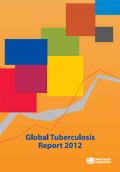
Resource | Publications,
Tuberculosis (TB) remains a major global health problem. It causes ill-health among millions of people each year and ranks as the second leading cause of death from an infectious disease worldwide, after the human immunodeficiency virus (HIV). The latest estimates included in this report are that there were almost 9 million new cases in 2011 and 1.4 million TB deaths (990,000 among HIV negative people and 430,000 HIV-associated TB deaths). This is despite the availability of treatment that will cure most cases of TB. Short-course regimens of first-line drugs that can cure around 90% of cases have been available since the 1980s.
This is the seventeenth global report on tuberculosis (TB) published by WHO in a series that started in 1997. It provides a comprehensive and up-to-date assessment of the TB epidemic and progress in implementing and financing TB prevention, care and control at global, regional and country levels using data reported by 204 countries and territories that account for over 99% of the world’s TB cases.
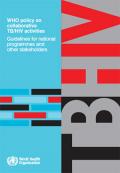
Resource | Guidelines,
In 2004, the World Health Organization (WHO) published an interim policy on collaborative TB/HIV activities in response to demand from countries for immediate guidance on actions to decrease the dual burden of tuberculosis (TB) and human immunodeficiency virus (HIV).
These policy guidelines on collaborative TB/HIV activities are a compilation of existing WHO recommendations on HIV-related TB. They follow the same framework as the 2004 interim policy document, structuring the activities under three distinct objectives: establishing and strengthening mechanisms for integrated delivery of TB and HIV services; reducing the burden of TB among people living with HIV and initiating early antiretroviral therapy; and reducing the burden of HIV among people with presumptive TB (that is, people with signs and symptoms of TB or with suspected TB) and diagnosed TB.
The updated policy, in contrast to the 2004 policy, recommends offering routine HIV testing to patients with presumptive or diagnosed TB as well as to their partners and family members as a means of reducing the burden of HIV. TB patients who are found to be HIV-positive should be provided with co-trimoxazole preventive therapy (CPT).
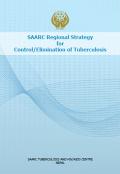
Resource | Publications,
Tuberculosis (TB) is one of the major public health problems in SAARC Region. Out of the 22 high TB disease burden countries (HBC) in the world, four countries (Afghanistan, Bangladesh, India and Pakistan) are in the SAARC Region. There are estimated 4.54 million prevalent cases, and 3.07 million new cases in the Region.
SAARC Tuberculosis and HIV/AIDS Centre (STAC), Kathmandu, Nepal, a Regional Centre of SAARC, was established for prevention and control of TB through coordination of National TB Control Programs (NTPs) in the Member States.
In line with STOP TB Partnership Strategy, STAC has developed SAARC Regional Strategy for Control/Elimination of TB for achieving MDG of reducing disease burden of TB to half by 2015, and finally its elimination by 2050. The strategy will be implemented for a period of Five years, 2013-2017. The SAARC Regional Strategy is developed with the joint efforts and inputs of all the SAARC Member States to address the challenges and issues in the context of the region and member countries.
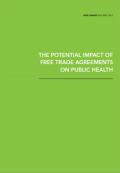
Resource | Publications,
Over the past ten years, an increasing number of countries are initiating, negotiating and agreeing new trade agreements between two countries or amongst a group of countries. These are commonly known as free trade agreements or "FTAs", and they are promoted as providing significant economic benefits to signatory countries through the removal or reduction of barriers to trade in goods and services. Many political leaders have indicated that they would prefer to remove or reduce trade barriers through the multilateral system in a way that benefits all countries belonging to the World Trade Organization. Nevertheless, given that the "Doha Round" of negotiations is taking longer than initially anticipated to be concluded, bilateral and regional FTAs are often seen as a way to move forward the trade liberalization agenda in the meantime.
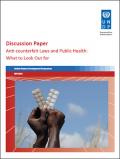
Resource | Publications,
The purpose of the Discussion Paper is to facilitate the UNDP consultation on enforcement of intellectual property rights, in particular anti-counterfeit measures and access to HIV treatment and other essential medicines in sub-Saharan Africa. The Discussion Paper summarizes the developments in intellectual property rights enforcement in the world and in the region. It elaborates on the public health impact of anti-counterfeit laws and discusses whether they are an adequate solution to the legitimate concerns about the quality, safety and efficacy of medicines. The Discussion Paper explores the impact of such laws on the spread of substandard and falsified medicines compared to their impact on good-quality generic medicines, which are essential for the public health systems of most African countries.
The Discussion Paper explores model provisions for the definition of ‘counterfeiting’, criminal liability, powers of seizure and storage, goods in transit, rules on evidence and presumptions and liability for loss of or damage to goods. Discussions of the model provisions evolve around the public health priorities of African countries, and the need to avoid conflation between good-quality generics and substandard and falsified medicines.
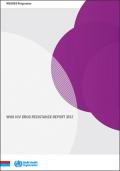
Resource | Publications,
At the end of 2011, more than 8 million people were receiving antiretroviral therapy in low- and middle-income countries, a dramatic 26-fold increase from December 2003. Although it can be minimized, some degree of HIV drug resistance is anticipated to emerge among people on treatment even when appropriate antiretroviral therapy is provided and high levels of adherence are achieved. Therefore, WHO initiated global surveillance of HIV drug resistance in 2004 in order to adequately monitor the emergence of HIV drug resistance as countries scaled up access to antiretroviral therapy.
Although HIV drug resistance data from low- and middle-income countries are increasingly available, lack of surveillance data over time substantially limits the ability to assess trends in these countries. As ART coverage continues to grow, national programmes should perform routine surveillance of transmitted and acquired HIV drug resistance to optimize programme planning and management and to inform antiretroviral therapy policy.
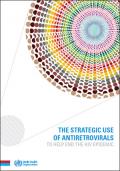
Resource | Publications,
This document is a discussion paper, prepared for the 2012 InternationalAIDS Conference in Washington DC, United States of America. It highlights key issues that confront the global community, policy-makers and national programme planners as they seek to make optimal use of antiretroviral drugs (ARVs) as part of the broader response to HIV.
It also discusses how ARVs could contribute to eventually ending the HIV epidemic. The paper does not in itself constitute a World Health Organization (WHO) guidance document, even though it summarizes existing WHO guidelines related to ARV use, highlights progress in the Treatment 2.0 initiative, and summarizes the next steps in WHO’s normative work related to ARV use.
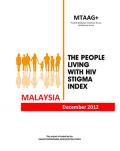
Resource | Publications,
The People Living with HIV Stigma Index Study in Malaysia was conducted by The Positive Malaysian Treatment Access and Advocacy Group (MTAAG+) to document and measure the extent of HIV-related stigma and discrimination experienced by people living with HIV in order to contribute to strengthening the evidence base for advocacy, policy change and programme interventions.
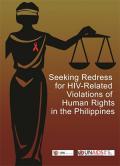
Resource | Publications,
This report is the result of a project by the Philippine country office of the JointUnited Nations Programme on HIV/AIDS (UNAIDS) aimed to identify the various redress mechanisms in the Philippines that can be accessed by people living with HIV (PLHIV) in case their rights were violated.
Reddress is an act or process meant to correct a situation involving the violation of a right. It could be to address a past injury or violation, or to prevent future harm. Redress is usually obtained through the courts, although there are some out-of-court mechanisms that could also result in redress.
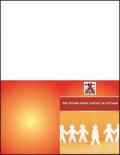
Resource | Publications,
HIV-related stigma is recognized both globally and in Viet Nam as a primary barrier to addressing prevention and care issues and ensuring access to essential services. The global Stigma Index study was designed to address the need for a quantitative recording and analysis of the different levels and types of stigma, as well as changes in trends and with time, to inform evidence-based policy and programmes. The process of conducting the Stigma Index is as important as the result: the survey is conducted “by PLHIV, for PLHIV”.





